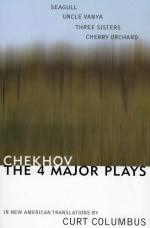|
This section contains 6,324 words (approx. 22 pages at 300 words per page) |

|
SOURCE: Jackson, Robert Louis. “Chekhov's Seagull: The Empty Well, the Dry Lake, and the Cold Cave.” In Chekhov's Great Plays: A Critical Anthology, edited by Jean-Pierre Barricelli, pp. 3-17. New York: New York University Press, 1981.
In the following essay, which was originally published in 1967, Jackson elucidates the theme of art versus reality in The Seagull.
Art is at the center of The Seagull. Four characters in the play are actresses or writers. Everybody talks about art. Everybody embodies or lives out a concept of art. The problem of talent—what it takes and means to become an artist—is a fundamental theme of the play.1 Illusion and reality, dream and fulfillment in art and life constitute the innermost concern of the author. Finally, art in its most basic form as myth gives expression to the underlying dramatic conflicts and realities in the play: the myth of creation, the...
|
This section contains 6,324 words (approx. 22 pages at 300 words per page) |

|


